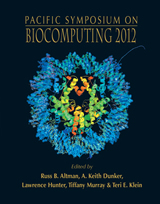Predicting the Effects of Copy-Number Variation in Double and Triple Mutant Combinations
Gregory W. Carter1, Michelle Hays2, Song Li2, and Timothy Galitski3
1The Jackson Laboratory, 600 Main Street, Bar Harbor, ME 04609, USA;
2Institute for Systems Biology, 401 Terry Avenue North, Seattle, WA 98109, USA;
3Millipore Corporation, 290 Concord Road, Billerica, MA 01821, USA, and Institute for Systems Biology, 401 Terry Avenue North, Seattle, WA 98109, USA
Email: greg.carter@jax.org; mhays@systemsbiology.org; soli@systemsbiology.org; timothy.galitski@merckgroup.com
Pacific Symposium on Biocomputing 17:19-30(2012)

Abstract
The study of genetic interactions is a powerful tool in inferring structure and function of biological networks. To date, genetic interaction studies have been dominated by pair-wise gene deletion screens. However, classical genetic analysis and natural genetic variation involve diverse gene forms ranging from null alleles to copy number variants. Moreover, genetic variation is typically multifactorial. Addressing multiple combinatorial genetic variations ranging in gene activity is therefore of critical value. We approach this problem using genetic network modeling that quantitatively encodes how genes influence the activity of one another and phenotype outcomes. A network model was initially inferred from linear decomposition of gene expression data. We used this network to predict the effects of combining multi-copy and deletion mutations of specific gene pairs and a gene triplet. Predicted expression patterns across hundreds of genes were experimentally validated. Prediction success was critically dependent on how a multi-copy gene interacted with other genes in the network model. This strategy provides a template for the inference, prediction, and testing of genetically complex hypotheses involving diverse genetic variation.
[Full-Text PDF] [PSB Home Page]